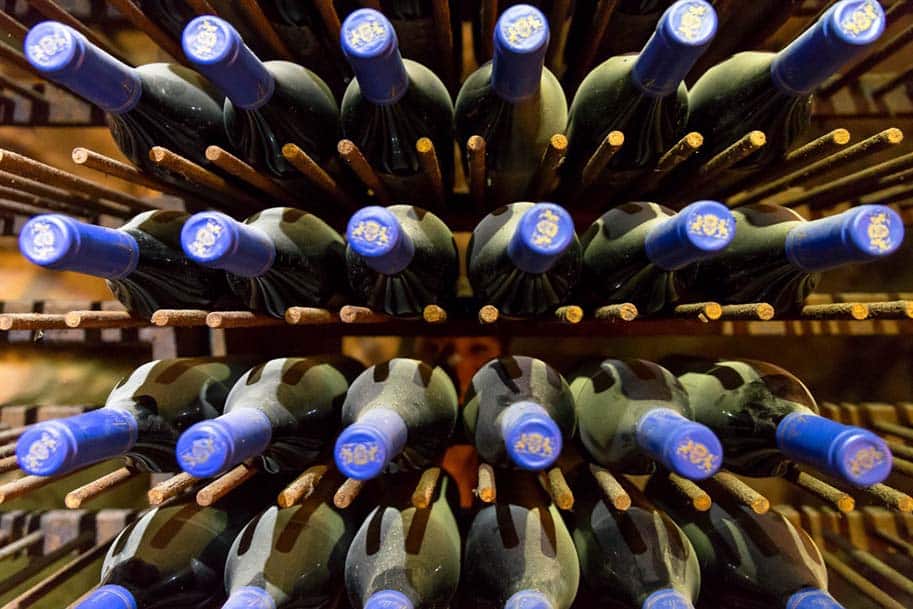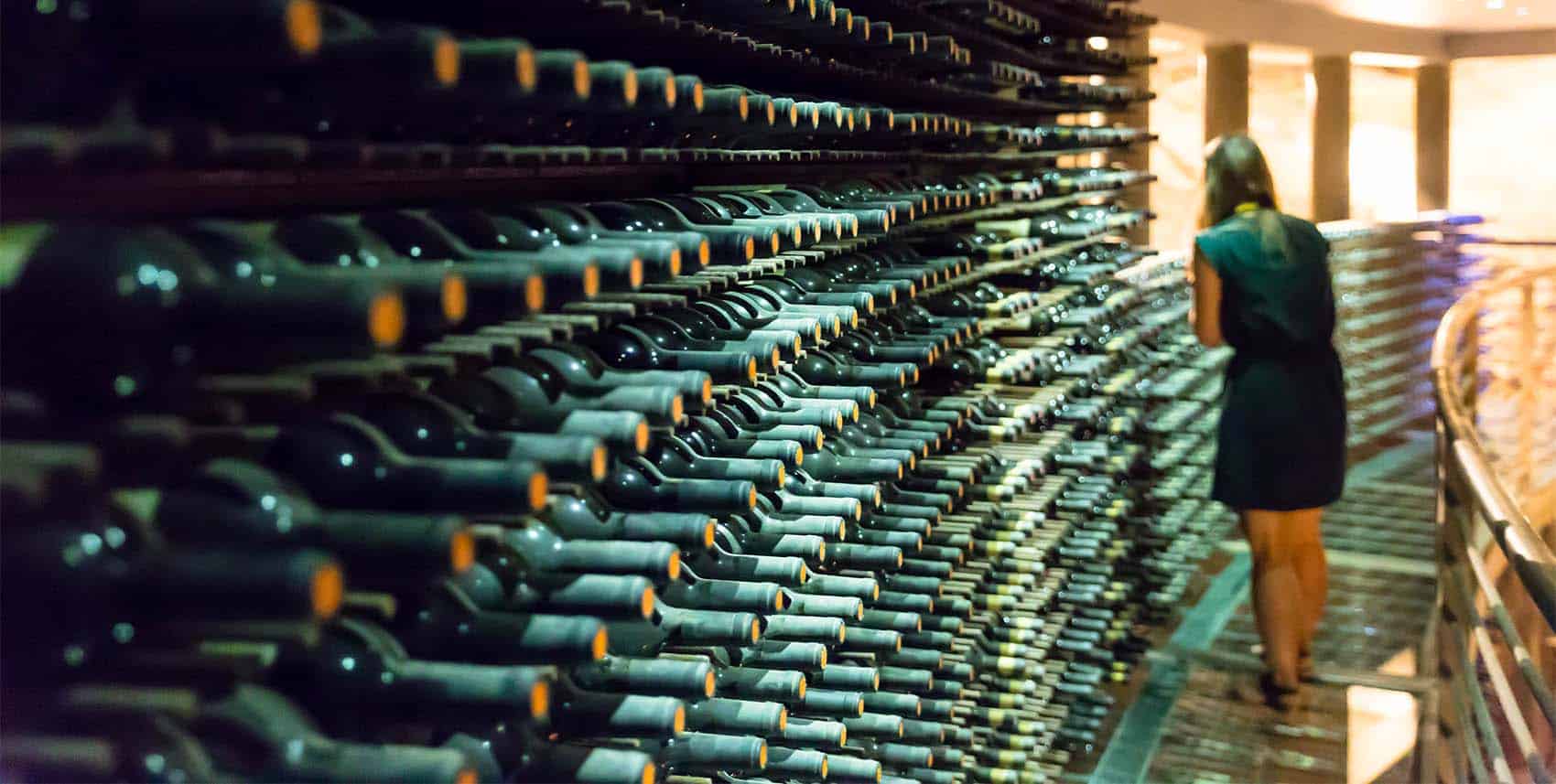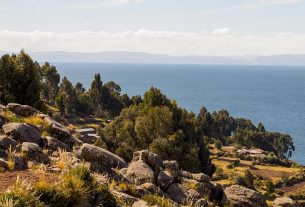You don’t know much about wines, but you love drinking some wines. Then, in the middle of a trip to Chile, you realize why the country is responsible for almost half of the wines sold in Brazil – there are many wineries, a climate more than conducive to winemaking and endless options on supermarket shelves. And, best of all, there are several (and good) cheap Chilean wines there. In other words, buying a few bottles in Santiago and bringing them to Brazil is worth it a lot. Even with the IOF.
Once you have decided to return home with suitcases full of bottles, three basic questions arise: where to buy Chilean wines in Santiago? How many bottles can I take to Brazil? And, most importantly, which wines to buy?
I also know very little about wine – I only know how to drink it – I asked local residents for help to make this list of Chilean wines that you should bring home. Do you want to suggest any? Just leave a comment!
Are you going to travel? Travel Insurance is mandatory in dozens of countries and essential for any trip. Don’t be left unprotected in Chile. About this, read the text Santiago travel insurance: is it mandatory? Which one is the best? Travel Insurance: South America.
See too:
Tour of the wineries of the Colchagua Valley, Chile
Concha Y Toro – visit to the famous Santiago winery
Visit and bike tour at Santa Rita winery, Chile
Where to eat and drink in Santiago – restaurant tips
Where to drink wine in Chile: bars and wineries in Santiago
Chilean wines to bring from Santiago
Try to avoid wines that can easily be found in Brazilian supermarkets. A small saving, of 10 to 20 reais, may not compensate for the extra weight in your suitcase and the purchase in foreign currency. Therefore, even if there are several cheaper options, it may be worth investing in slightly better wines – which would be more difficult to find and more expensive in Brazil.
- Coyam – A red from the Emiliana winery, located on Ruta 68, between Santiago and Valparaíso. It cost, at the winery, the equivalent of R$85, including IOF. In Brazil I found the same wine for as little as R$200, on several websites. It is 44% Syrah, 30% Carmenere and 12% Cabernet Sauvignon, among others.
- Las Brisas Pinot Noir – Viña Leyda, which is 90 km from Santiago, in a wine region that developed late, starting in the 1990s. In Chile, I found this wine for the equivalent of something between R$50 and R$60. In Brazil, it is possible You can find it on websites for around R$150.
- Ge – The most exclusive wine from Emiliana, which is an organic winery – the kind of bottle to have for a very special occasion. It is a blend, with 45% Syrah, 40% Carmenere and 15% Cabernet Sauvignon. It’s not cheap: in Chile, it costs the equivalent of R$300. In Brazil, you can find it for around R$500.
- Marques de Casa Concha Carménère – Since Concha y Toro is an almost obligatory stop for Brazilian tourists in Chile, a wine must be purchased at the winery. On the internet, it is sold in Brazil for R$120. In Chile it costs around R$60.
- Montes Alpha Cabernet Sauvignon – Created in 1980, Viña Montes is located in the Colchagua Valley, 180 km from Santiago. It produces wines with great value for money. This Cabernet Sauvignon can be found in Brazil for around R$150. In Chile, it costs around R$70.
See also: Carménère, the grape that was reborn in Chile
Where to buy?
If your trip is just through Santiago and the surrounding area and you are going to include wineries on your itinerary, it might be a good idea to buy from them – the advantage is that this makes your choice process easier, if you are on one of those tasting tours.
Supermarkets, such as the Jumbo chain, also tend to have shelves filled with a wide range of brands. And it’s worth asking for recommendations on the names of specialized houses, whether for guides or at the counter of your hotel or hostel. In Costanera Center, the most famous shopping mall in Santiago, which is housed in a skyscraper, there are wine stores.
Finally, there is always the Free Shop, just outside Santiago. The problem is that the number of options may be fewer and, if you arrive late, you may not have time to make your choice in peace.
How many bottles of wine can you bring from Santiago?
Pay attention to two basic rules. The first is from the Federal Revenue, which stipulates two limits for purchases abroad and which are valid in this case. For international travel by air, each passenger can bring the equivalent of $500 in purchases. It is the tax-free quota. If you exceed this and you are inspected, you will have to pay taxes calculated based on the amount exceeding these 500 dollars.
Note that the limit is not just $500 for wine, but for all purchases you make in the country. It’s worth remembering that cameras and cell phones can be considered exempt items due to the circumstances of the trip – that is, if you buy them to use during your vacation and don’t have another duplicate item, you don’t have to pay taxes and these equipment don’t use this quota of 500 dollars.
In addition to the financial limit, there is a quantitative limit, which is 12 liters per person (or 16 750ml bottles). If you travel as a family, remember that luggage has to make sense for each member. In other words: children under 18 do not have an exempt quota for alcoholic beverages.
In addition to the rules of the Federal Revenue, there are those of airlines. For checked baggage, there is a weight limit, which is generally 23 kg. If your suitcase exceeds the limit due to wine, you will have to pay for excess baggage at the check-in counter. And in dollars. Check the baggage rules for your ticket before purchasing your bottles.
Finally, there is a controversy involving wine bottles in carry-on luggage. According to aviation rules, on international flights the transport of liquids is limited to 100 ml containers. But there is no shortage of reports of travelers who managed to bring up to five bottles of wine in their hand luggage from Chile – and note that I’m not talking about purchases at the Free Shop.
This is so common in Santiago (and also in Mendoza, Argentina), that airlines don’t even know how to respond to this question. This link here has an interesting dialogue between LATAM’s Twitter profile and its passengers, in which each hour the company informs something. And then he says that ‘according to the rules it couldn’t be done, but that in general at that airport it is common for up to five bottles to be allowed for transport in hand luggage’. To avoid problems, check with your airline close to your travel date.

But Macca Sherifi, shutterstock.com
How to bring it in checked luggage?
To avoid the risk of picking up a wine-soaked suitcase at baggage claim, it is essential to protect the bottles well. Some wineries and supermarkets sell protective packaging suitable for flights and there are even suitcases made just for transporting bottles, but the most economical and practical way is to wrap them in your clothes. Place each bottle in a plastic bag and then wrap it completely. Take care to place clothes between the bottles to prevent them from colliding during transport. It usually works, despite the fear.
If you travel in winter, wear thicker clothes during this process. Another option is to use bubble wrap. And I’ve seen reports of tourists wrapping the bottles in diapers, thus achieving a double effect: protecting the wines and preventing them from leaking into the rest of the suitcase, in case one of them were to break.
Sign up for our newsletter

Sign up for our newsletter and stay up to date with exclusive news
that can transform your routine!
Warning: Undefined array key "title" in /home/storelat/public_html/wp-content/plugins/link-whisper-premium/templates/frontend/related-posts.php on line 12
Warning: Undefined array key "title_tag" in /home/storelat/public_html/wp-content/plugins/link-whisper-premium/templates/frontend/related-posts.php on line 13




